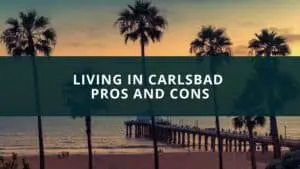City Anderson is a small city located in the northern part of California. The city is home to a population of just over 10,000 people. The city is known for its beautiful scenery, its quaint downtown area, and its friendly community. The city is also home to a number of businesses and amenities, making it a great place to live and work. Anderson is a great place to raise a family or retire. The city is safe and has a low cost of living. There are plenty of things to do in Anderson, and the city is close to a number of larger cities and attractions.
Quick navigation
1. Downtown
Downtown California is a vibrant and bustling area that is home to a variety of businesses, restaurants, and shops. The area is also known for its nightlife, with a number of bars and clubs located in the area. Downtown California is located in the heart of the city and is easily accessible by public transportation.
2. The Avenues
The Avenues is a neighborhood in the western United States, located in the city of Los Angeles, California. The Avenues is adjacent to the Mid-City section of Los Angeles and Koreatown, and just south of Hollywood and Melrose. The Avenues is a relatively diverse neighborhood with a population that is majority Hispanic and Latino. The Avenues is also home to a significant Korean American community. The neighborhood is served by the Los Angeles Unified School District.
3. Northside
Northside, California is a small town located in the northern part of the state. The town is home to a few thousand people and is a popular destination for tourists. The town is known for its beautiful scenery, its friendly residents, and its laid-back atmosphere. Visitors to Northside can enjoy hiking, fishing, and camping in the nearby mountains, or they can simply relax in one of the town’s many cafes or shops. Regardless of what you’re looking for, Northside is sure to have something to offer.
4. Southside
Southside is a small town located in California. It is a popular destination for tourists and has a reputation for being a friendly and welcoming place. The town has a variety of shops and restaurants, as well as a number of historic buildings. There are also a number of beaches located nearby, making it a perfect place to relax and enjoy the California sun.
5. Westside
Westside is a neighborhood in Los Angeles, California. The area is home to many celebrities, businesses and upscale residents. According to the 2010 census, the population of Westside was 9,251. The median income for a household in Westside was $95,727, and the median income for a family was $109,805. The area is also home to many schools, parks and recreation centers.
6. Eastside
Eastside, California is a neighborhood in Los Angeles, California. The area is known for its high crime rate and its poverty. However, Eastside is also home to a number of community organizations and programs that help residents improve their lives. Eastside is a culturally diverse community, with residents of all backgrounds and ethnicities. The neighborhood is home to a number of parks and recreation facilities, as well as schools and community centers. Eastside residents are working to improve the quality of life in the community, and make it a safe and thriving place to live.
7. Anderson Valley
Anderson Valley is a beautiful wine region in northern California. The climate is perfect for growing grapes, and the scenery is stunning. There are many wineries in the area, and they produce some of the best wine in the world. The region is also home to a number of craft breweries, and the beer scene is thriving. There are plenty of things to do in Anderson Valley, and it is a great place to relax and enjoy the good life.
8. Shasta Lake
Shasta Lake is a man-made reservoir in the northern part of the state of California, United States. It is within the Whiskeytown–Shasta–Trinity National Recreation Area, operated by the Shasta-Trinity National Forest. It is also popularly known as Lake Shasta. The lake is fed by the Sacramento River, and its outlet is the Sacramento River Delta. The reservoir forms part of the Central Valley Project, which also includes Trinity Lake.
The lake has a capacity of 4,552,000 acre⋅ft (5.651 km3), making it the largest reservoir in California and the eighth-largest in the United States. The surface of the lake is at an elevation of 1,067 ft (325 m). The lake has 365 mi (587 km) of shoreline and 30,370 acres (122.8 km2) of water.
The lake is a popular destination for boating, waterskiing, camping, houseboating, and fishing. The lake is home to a number of fish species including bass, trout, catfish, and salmon. There are also a number of marinas and boat launches scattered around the lake.
Shasta Lake is also a popular destination for a number of water-based activities such as swimming, canoeing, kayaking, and stand-up paddleboarding. There are a number of beaches and picnic areas around the lake which make for perfect spots to relax and enjoy the stunning scenery.
9. Redding
Redding is a city located in Shasta County, California, United States. As of the 2010 census, the city had a population of 89,861, which makes it the fourth-largest city in the county and the fifteenth-largest city in the state. It is the county seat of Shasta County. The city is located on the Sacramento River, which flows through the center of the city. The city is also located about halfway between Sacramento and the Oregon border.
Redding is a city with a rich history. The first people to live in the area were the Wintu tribe. The Wintu people lived in the area for thousands of years before the first Europeans arrived. The first European to settle in the area was a man named Pierson B. Reading, who arrived in 1844. Reading built a cabin near the present-day site of the Redding Civic Center.
In 1848, the United States acquired the area from Mexico in the Treaty of Guadalupe Hidalgo. In 1852, Reading decided to build a town on the site of his cabin and he named it “Reading’s Landing”. In 1854, the town was officially renamed “Redding” in honor of B.F. Reading.
The city of Redding has a Mediterranean climate, with hot, dry summers and cool, wet winters. The average high temperature in July is 92 degrees Fahrenheit (33 degrees Celsius), and the average low temperature in January is 40 degrees Fahrenheit (4 degrees Celsius).
Redding is a beautiful city located in a picturesque setting. The city has a variety of parks and green spaces, as well as a number of museums and historical sites. The city is also home to a number of festivals and events throughout the year.
10. Lakehead
Lakehead is a census-designated place (CDP) in Shasta County, California, United States. The population was 1,560 at the 2010 census, up from 1,294 at the 2000 census. It is the site of a large sawmill and was a stop on the Central Pacific Railroad.
Lakehead is located at 40°26′53″N 122°31′43″W / 40.44806°N 122.52861°W / 40.44806; -122.52861 (40.447940, -122.528622).[4] According to the United States Census Bureau, the CDP has a total area of 3.1 square miles (8.0 km2), of which 3.1 square miles (8.0 km2) is land and 0.04 square miles (0.10 km2) (0.97%) is water.
Lakehead is about 1 mile (1.6 km) west of the shore of Shasta Lake, the largest reservoir in California. It is on Interstate 5, the main north-south highway through the state. It is about 25 miles (40 km) north of Redding, the county seat, and about 10 miles (16 km) south of the city of Shasta Lake.
According to the 2010 census, Lakehead has a total area of 1.560 square miles (4.05 km2). Of this, 1.556 square miles (4.04 km2) is land and 0.004 square miles (0.01 km2) is water.
The 2010 United States Census[5] reported that Lakehead had a population of 1,560. The racial makeup of Lakehead was 1,126 (72.2%) White, 29 (1.9%) African American, 45 (2.9%) Native American, 25 (1.6%) Asian, 4 (0.3%) Pacific Islander, 189 (12.1%) from other races, and 68 (4.4%) from two or more races. Hispanic or Latino of any race were 596 persons (38.2%).
As of the census[6] of 2000, there were 1,294 people, 507 households, and 350 families residing in the CDP. The population density was 837.2 people per square mile (323.0/km²). There were 541 housing units at an average density of 346.6 per square mile (133.3/km²). The racial makeup of the CDP was 80.09% White, 1.54% African American, 2.03% Native American, 0.93% Asian, 0.08% Pacific Islander, 10.59% from other races, and 4.70% from two or more races. Hispanic or Latino of any race were 14.60% of the population.
There were 507 households out of which 30.6% had children under the age of 18 living with them, 53.5% were married couples living together, 11.3% had a female householder with no husband present, and 28.8% were non-families. 21.9% of all households were made up of individuals and 10.1% had someone living alone who was 65 years of age or older. The average household size was 2.56 and the average family size was 2.96.
In the CDP, the population was spread out with 24.4% under the age of 18, 7.6% from 18 to 24, 26.1% from 25 to 44, 26.7% from 45 to 64, and 14.2% who were 65 years of age or older. The median age was 38 years. For every 100 females, there were 107.4 males. For every 100 females age 18 and over, there were 111.0 males.
The median income for a household in the CDP was $37,625, and the median income for a family was $41,667. Males had a median income of $31,875 versus $23,125 for females. The per capita income for the CDP was $15,552. About 12.0% of families and 15.7% of the population were below the poverty line, including 17.6% of those under age 18 and 16.8% of those age 65 or over.



